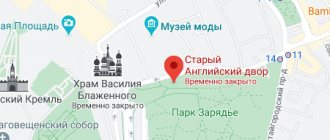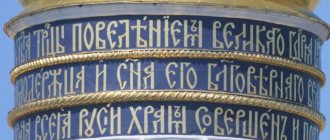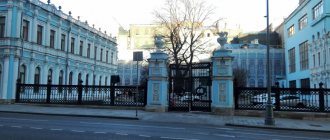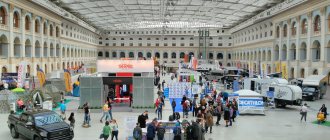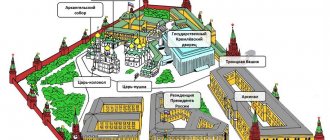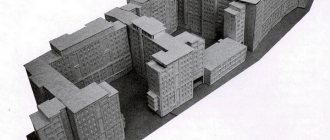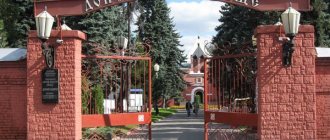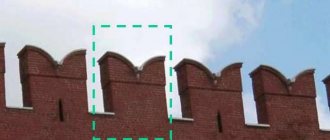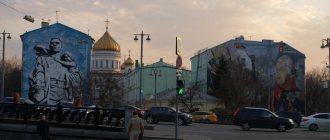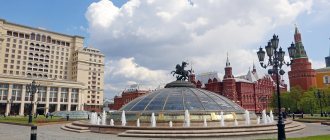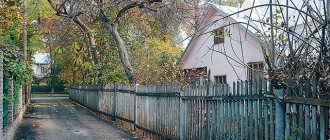Nikolskaya street
Over the course of a long journey of almost 500 years of development, Nikolskaya Street, like a litmus test, reflected the intensity, decline, flourishing and revival of the spirit of Moscow. The apotheosis of the new history was the transformation of the street into a promenade area, which allowed it to become the center of events during the 2021 FIFA World Cup. The spontaneous fan zone of football fans was truly a triumph for Nikolskaya in her new guise. However, in order, we suggest you take a leisurely stroll along this amazing street, limited in scope - from Nikolsky Gate to Lubyanka and infinitely rich in content. Well, go ahead!
From the history of Nikolskaya Street
According to one version of historians, Nikolskaya Street, which received its name in honor of the monastery of St. Nicholas the Old, founded by Boris Godunov, had more than one historical name. In her name she retained echoes of historical events that influenced the appearance of Moscow and were reflected in the spiritual heritage of the city.
Initially, before the Mongol yoke, the street was called “Sacred” because of the abundance of sacred places, temples and churches on it. Its other name was Sretenskaya. Being part of the Vladimir Highway, which connected the cities of the Golden Ring with Moscow, before the construction of the Kitai-Gorod Wall began in the 15th century, it was one with Sretinka, Lubyanka and Red Square.
As mentioned above, the history of the origin of the name Nikolskaya remains a controversial issue. There was a slightly different version - as if the name was given in honor of the Nikolsky Gate, into which the beginning of the street “rested”. The fact remains reliable that the first mention of it within Kitai-Gorod as Nikolskaya dates back to 1547. In the period from the 18th to the beginning of the 19th century, the business district of the city was formed, in modern terms. The essence of Nikolskaya is exquisite coffee shops, an abundance of bookstores and shopping arcades. The street was not only famous for its shopping places, but there were monasteries adjacent to the shops, and the Slavic-Greek-Latin Academy was also located here. The symbiosis of spirituality, business activity and academicism already at that time predetermined the important cultural and historical significance of this area in the history of the city.
At the beginning of the 21st century, the street represented a slightly different version of business activity - eternal traffic jams of cars, a flow of pedestrians and historical facades of buildings transformed by various advertising and household air conditioners.
A qualitative change occurred in 2013, when the pedestrian zone of Nikolskaya Street was opened. The landscaped area, reconstructed facades, tiled street, outdoor cafe, flower beds, benches and other paraphernalia of the promenade have done their job. Now this is one of the favorite places for walks, recreation and excursions for Muscovites and city guests. The spontaneously organized fan zone of football fans confirmed the fact of restoration of not only the form, but also the revival of the spirit of this historical patch of Moscow. A place that has known both the rise and fall of different periods in the formation of urban culture.
History of Nikolskaya Street
Initially, the street existed as part of the Vladimirsky tract and before the formation of Red Square it began directly from the Nikolsky Gate of the Kremlin, but did not have any clear ending, continuing with Lubyanka and Sretenka. Nikolskaya took its modern form in the 1530s, when the Kitay-Gorod wall was built: at the end of the street the Vladimir (Nikolsky, Sretensky) gates of the Kitay-Gorod wall were erected, and the street received its logical conclusion.
The first capital buildings along the Vladimir Road were monasteries and religious buildings: in 1292 the Epiphany Monastery was founded, in 1390 - the Monastery of St. Nicholas the Old. Gradually, the Upper Trading Rows began to form in the area of Red Square, and boyar courtyards and estates appeared along the street: the Sheremetevs, Dolgorukis, Romanovs, Cherkasskys and others. By the time the Kitaygorod Wall was erected, Nikolskaya Street was already a fairly prestigious place on the map of Moscow.
In 1563-1564, the Moscow Printing Yard was built near the St. Nicholas Monastery, where in the same year Ivan Fedorov and Pyotr Mstislavets - the first Russian book printers - published The Apostle, the first dated printed book in Russia. In 1660, near the Printing Yard, the Zaikonospassky Monastery was built, at which a school was established. A little later - in 1680 - a school was established at the Printing Yard; in 1687, the schools united into the Slavic-Greek-Latin Academy - the first higher educational institution in Russia.
Thus, Nikolskaya Street becomes the center of Russian education, printing and enlightenment.
In the 17th century, vacant plots on Nikolskaya were built up with courtyards of the noblest boyar families, and the street finally became elite. The status of the street is emphasized by the paving: one of the few in Moscow, it is paved with boards nailed on top of ordinary pavement logs. After the Kremlin was liberated from the Polish-Lithuanian invaders, the Kazan Cathedral was built near Red Square .
By the 19th century, Nikolskaya Street was lined with shops and became the center of the city book trade: there were 26 bookstores on it and the adjacent Novaya Square - despite the fact that there were only 31 bookstores in the whole of Moscow. After this, the character of the street began to gradually change, and from the middle of the 19th century it became the center of business life: offices of the richest entrepreneurs, expensive apartment buildings and shops appeared on it, the prestigious Slavic Bazaar with a restaurant was built, in which Stanislavsky and Nemirovich-Danchenko agreed about creating your own theater. The apotheosis of Nikolskaya commercialization was the construction of large shopping centers: in 1893 a new building of the Upper Trading Rows (the current GUM) appeared, in 1900 - Nikolsky Trading Rows.
The street also played its role in the Revolution: during the Bolshevik breakthrough to the Kremlin, cannons were installed on it, shots from which destroyed the Nikolsky Gate. During the Soviet years, the appearance of Nikolskaya changed significantly: some churches were closed, the walls of Kitay-Gorod and a number of buildings were demolished, but in general, high-quality historical buildings were preserved on the street.
In 2013, the street was reconstructed and became pedestrian.
Kazan Cathedral (Nikolskaya, 3)
At the corner of Nikolskaya Street and Red Square, to the left of the main GUM of the capital, there is the Cathedral of the Kazan Icon of the Mother of God. The icon of the Most Holy Theotokos, called Kazan, is kept here. This is the patroness of the Orthodox Russian people. The fame of the miraculous power of the icon attracts pilgrims from all over the world. Built in 1636, the Kazan Cathedral surprisingly resonates with the history of Russia. This is reflected in historical facts and architectural style. Initially, the cathedral was built in variants of ancient Russian architecture; later, in different periods of history, the appearance reflected different stylistic trends. From luxurious baroque, impeccable classicism to an eclectic combination of heterogeneous elements.
300 years after its construction, the Cathedral was destroyed in 1936, marking the religious ostracism of this historical period. Only in 1990 the Cathedral was restored, regaining its essence. Now it is a functioning Cathedral, personifying the strength of spirit, faith and self-awareness of the Russian people.
Old Mint (Nikolskaya, 5/1)
Immediately behind the Kazan Cathedral on the odd side of the street is the building of the former Mint. An architectural monument of the 17th century today, it is at the disposal of the Historical Museum. From Nikolskaya's perspective, it is difficult to understand the scale of the structure. Its oldest part, built in 1697, is a chamber in the Moscow Baroque style with arches made of red and white brick. In 1730, new buildings were created to house the provincial government of the city.
Thanks to the reliable security system for the Mint's precious fund, part of the basement was used as a debtor's prison. Here, before being sent to Butyrka prison, Emelyan Pugachev was shackled. By personal order of Catherine II, Alexander Radishchev, according to the queen’s definition, a rebel “worse than Pugachev,” was imprisoned in the basements of the Mint.
In the courtyard of the Red Mint there is a permanent exhibition of ancient artillery pieces; the elements of artistic forging and hand-engraving of the pieces are especially impressive. However, there is a lot worth seeing here - the Red Mint occupies a significant area, bounded by the Resurrection Gate, the Seal Court and the Zaikonnospasky Monastery, but for now let's take a walk further to get acquainted with other historical monuments.
Zaikonospassky Monastery (Nikolskaya, 7/9)
Founded by Boris Godunov, the Spasskaya Monastery was named after its location; it was located behind the shopping icon row on Nikolskaya Street. Hence the corresponding name of the Zaikonnospassky Monastery. 20 years later, trade in icons in the ranks was banned at the behest of Tsar Alexei Fedorovich, the monastery received its further development in a slightly different version. Here, after 1630, a national school was founded to improve the cultural level of the clergy.
At the end of the 17th century, through the efforts of the clergy, the theological school acquired the status of the Slavic-Greek-Latin Academy, where Mikhail Lomonosov studied. It’s a curious coincidence, but it was with the opening of Moscow University, which much later, in 1940, was named after Lomonosov, that the decline of the “teacher’s” monastery as an educational center began. Currently, the Zaikonnospasky Monastery remains active. Services are held in the Temple of the Savior Not Made by Hands.
Secretaries-spies
The legendary first discovery on Nikolskaya is the Slavic-Greek-Latin Academy ➊ founded in 1687 in the Zaikonospassky Monastery by the Greek brothers Ioannikios and Sophronius (d. 7-9). One of the most famous students of the first university in Russia, Mikhail Lomonosov , initially had the hardest time at the academy: his classmates were much younger and made fun of the “twenty-year-old big guy who smells like fish.” But the “big guy” quickly overtook everyone in academic performance! The 9-year training at the academy was based on a “secret method.” In the junior school, the transition from class to class was carried out with the help of exams, in the senior school - through debates (students prepared theological treatises and “challenged” them by debating with examiners), and the diploma was passed in the temple in the form of... reading a sermon. Few people know one of the secrets of the academy: it was subordinate to the Order of Secret Affairs - a special service that, among other things, trained clerks to carry out delicate assignments abroad.
Article on the topic
435 years of the Kazan Icon of the Mother of God: what miracles does it perform today?
Nikolo-Grechesky Monastery (Nikolskaya, 11-13)
The facade of the building with the bell tower of the St. Nicholas Monastery and the chapel of St. Nicholas the Wonderworker, designed by the architect George Kaiser, serves rather as a curtain than as a picture of the historical past of the oldest St. Nicholas-Greek monastery, which is mentioned in evidence from the end of the 14th century.
The monastery was once given to the Athonites in gratitude for the icon of Our Lady of Iveron that they donated to Moscow. Subsequently, it received the name of the St. Nicholas-Greek Monastery. This event took place in the middle of the 16th century. Unfortunately, in 1935 the monastery was destroyed, and the site of the Cathedral is now a lawn. Only a later architectural structure with a bell tower has survived; this is the façade building on Nikolskaya Street.
Nikolskaya Street - origin of the name
Based on the chronicles, the first name of the street is Sretenskaya (given after the Sretensky Monastery that stood here).
In the 16th century the street was renamed Nikolskaya. The name is associated with the monastery of St. Nicholas the Old, which stood at the beginning of the street, built on the Vladimirsky tract back in 1390.
Printing Yard (Nikolskaya, 15)
Near the St. Nicholas-Greek Monastery in 1553, by decree of Tsar Ivan the Terrible, the first Printing House was founded. Today the building of the former printing house is an object of architectural heritage. Since 1931, this premises has belonged to the Historical and Archival Institute of the Russian State University for the Humanities.
It was here that Russia's first printer, Ivan Fedorov, worked. The reaction to the publishing of printed volumes was predictable; the revolt of copyists, whose craft was threatened, ended with the arson of the printing house and the departure of the pioneer printer from Moscow. Later the building was restored and reconstructed. Only in 1917 the First Russian Printing House was closed, the premises were used for storing archives and naturally later became part of the institute.
Nikolskaya Street is not long, less than one kilometer. You can walk through it in a few minutes, if you don’t linger at each historical site. It has a slightly different measurement, not in meters. The unit of measurement for the oldest Moscow street is years and centuries, and even more precisely, the chronology of historical events that it has witnessed virtually since the birth of Moscow.
Secrets and sinister facts of Nikolskaya Street
Nikolskaya street in Moscow is one of the most visited in the capital. The proximity of the Kremlin, GUM and other local attractions, as well as the fact that recently it has become a purely pedestrian street, attracts Muscovites and guests of the capital here.
Today about several unknown facts and legends of Nikolskaya, which many do not know about or have simply forgotten.
Next to the former building of the Ferrein pharmacy, which after completion of construction was called nothing more than the “Tsar Pharmacy,” there is an inconspicuous three-story building at Nikolskaya, 23.
Before the revolution, the building was owned by the Moscow Chamber of Crafts, which rented out premises for shops and rental housing.
Photo 1. “Execution House” on Nikolskaya, 23 (far right)
In principle, the history of the house is ordinary, but in the pre-war years this place became one of the most terrible in Moscow - in the 1930s-1940s the Military Collegium of the Supreme Court of the Soviet Union was located here.
During the years of the “Great Terror”, from 1936 to 1938, about 36 thousand people were convicted within these walls, of which 31.5 thousand (!) were sentenced to capital punishment - execution. It was because of this terrible fact that Muscovites nicknamed the place “The Execution House.”
Another interesting building is the Moscow Printing Yard on Nikolskaya, 15.
Photo 2. Building on Nikolskaya, 15
It opened back in 1553 by decree of Ivan the Terrible, and 11 years later it was here that the first printed book in Rus', “The Apostle,” was published. The first printers were Ivan Fedorov and Pyotr Mstislavtsev.
Unfortunately, that building has not survived. A superstitious crowd burned it down in the 17th century, citing the fact that sorcerers had settled in the house.
In the middle of the 17th century, a new stone house was built on the site of the old one. In 1814 it was reconstructed and we can still admire this building in Gothic forms.
It is interesting that experts still cannot explain the presence of bas-relief images of a lion and a unicorn on the main facade.
Nikolskaya is also interesting because it was on it in 1687, within the walls of the Zaikonospassky Monastery (possession Nos. 7 and 9), that the first higher educational institution in Rus' was opened - the Slavic-Greek-Latin Academy.
The great Russian scientist Mikhailo Lomonosov studied within its walls from 1731 to 1735. There is a myth that an ordinary peasant guy was accepted here only because he was allegedly the illegitimate son of Emperor Peter the Great.
Read about another interesting place on Nikolskaya in the article “Where in the Mother See you could dine with cranes.”
Tretyakovsky proezd
However, there are several more objects and facts that it would be wrong not to mention. You can briefly and succinctly talk about them in two phrases, but behind these phrases there is not just a story, but a saga that lasts generations. Walking along Nikolskaya, you cannot pass by Tretyakovsky Proezd. This is the shortest street in Moscow, only 100 meters. Tretyakovsky Proezd connects Nikolskaya Street with Teatralny Proezd. The street, built with private funds from Moscow philanthropists, the Tretyakov merchants, has become a symbol of luxury, and today, just like a hundred years ago, the most expensive shops are located here. During the construction of the passage through the Kitai-Gorod wall, the Tretyakov Gate, stylized as Russian antiquity, was cut through. It’s worth going through Tretyakovsky Proezd to see the preserved part of the Kitay-Gorod wall next to the Metropol Hotel and the only surviving tower.
Ferreina Pharmacy (Nikolskaya, 21)
Not far from Tretyakovsky Proezd there is an old pharmacy building. Opened by royal decree of Peter I at the very beginning of the 18th century, the first pharmacy remained true to its traditions for more than 300 years. The last private owner of a pharmacy was the pharmacist Vladimir Karlovich Ferrein, it was he who founded the pharmaceutical company in 1902. There is an interesting feature of Ferrein's pharmacy - from Nikolskaya Street the building has a neo-Renaissance decor, and from Teatralny Proezd the decor is Gothic, it is clearly visible from the observation deck of the Children's World.
Nikolskaya Street in Moscow is a living testimony of urban culture, formed over many years of history. And even the fact that many monuments did not survive, were lost, or changed their functional purpose to suit the moral principles of society - this is also a story that will be assessed by descendants. This is the beauty of the oldest street in Moscow, that it was and remains in tune with the spirit of the city, being part of it, a symbol. Nikolskaya is a living artery of history with the life of the townspeople seething in it.
Multi-colored balloons on Kuznetsky Most
Golden LED garlands with purple, red and orange balls today decorate part of one of the oldest streets in Moscow - Kuznetsky Most. From the 18th century until the revolution of 1917, this was the main trading place of the capital , where clothing stores, bookstores and restaurants operated. Much the same can be said about the modern Kuznetsky Most - the street has preserved historical traditions and remains a popular place for walks for Muscovites and tourists.
